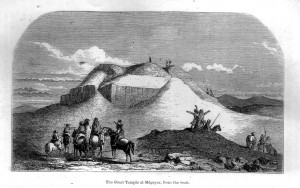Ur was one of the first cities in human history and as such is of incredible importance to archaeologists, historians, and people all over the world. The site ‘disappeared’ sometime after 400 BCE when the river that gave it life, the mighty Euphrates, had eventually wandered on its inexorable course too far away from the city to allow for irrigation. After that, the desert took its toll.
Though never again inhabited, the site was often ‘rediscovered’, since its characteristic ziggurat never really disappeared. Anyone adventuring through the desert in the area would naturally notice it standing high above the plain. As early as the 17th century travelers mention the site, which came to be known as the ‘mound of pitch’ (Arabic Tell al-Muqayyar) because of the bitumen or tar that had been used so often in building and waterproofing parts of the ancient city. Even today, the province of Iraq in which it sits, Dhi Qhar, draws its name from the Arabic for bitumen.
Major excavations of Ur, however, did not occur until the 20th century. The most extensive lasted from 1922-1934, when Sir Leonard Woolley headed a dig under the auspices of the Joint Expedition of the British Museum and the University of Pennsylvania Museum to Mesopotamia. The agreement at the time was that half the artifacts would stay in Iraq, the other half would be split between London and Philadelphia.
Now the two museums are making sure their records are complete and up to date. Ur was well published for its day, but there is still an enormous amount of data that is unpublished–letters from the field, notes, original photos, as well as information on thousands of artifacts. And all of this information should be public, to make research into the site easier and more efficient, and to expand the knowledge of the ancient Near East.

